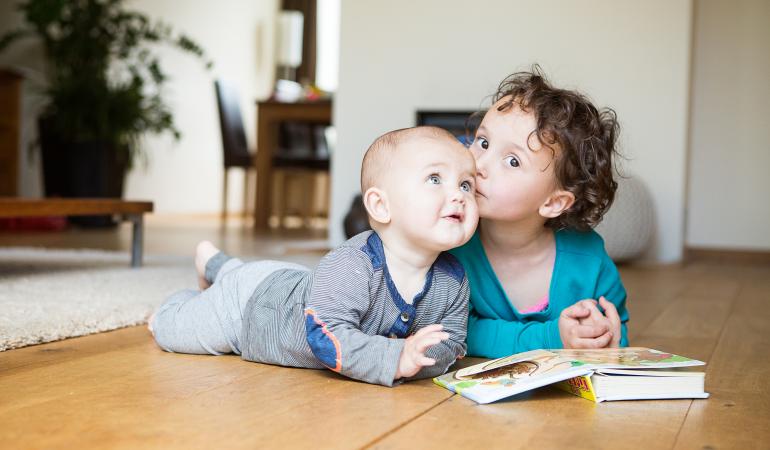
According to RIVM (Rijksinstituut voor Volksgezondheid en Milieu)’s registration system, at least 90% of babies have been vaccinated against mumps, measles and rubella (MMR). Furthermore, around 93% of babies are registered as having been vaccinated against diphtheria, pertussis (whooping cough), tetanus and polio (DTaP-IPV).
In 2022, boys received an invitation to get vaccinated against HPV (Humaan Papilloma Virus) for the first time. The registration system shows that more than 50% of boys have now had their first vaccination against HPV. The same is true for more than 60% of girls. For girls born in 2006, the participation rate has now risen to 75%.
This is according to RIVM’s provisional figures for January 2023 on participation in the Dutch National Immunisation Programme. There appears to have been a slight fall in the participation rate compared to last year. The exact amount of this decrease is impossible to determine, because not all vaccinations are included in the figures. This is due to a new registration method.
MMR and DTaP-IPV vaccinations
The provisional figures relate to babies born in 2020 (vaccinated against MMR at the age of two) and 2021 (vaccinated against DTaP-IPV at the age of one). The percentage of babies shown in RIVM (Rijksinstituut voor Volksgezondheid en Milieu)’s registration system as having been vaccinated against MMR is at least 89.5%, compared to 92.9% who have been vaccinated against DTaP-IPV. In January 2022, the percentage of babies who had been vaccinated against MMR and DTAP-IPV was respectively 92.6% and 94.0%.
HPV (Humaan Papilloma Virus) vaccination
Vaccination against HPV protects against various forms of cancer. In 2022, boys received an invitation to get vaccinated for the first time. The vaccine is now offered to both boys and girls during the year in which they turn 10 (in this case, to children born in 2012). In addition, some children aged 12–18 who had not yet been vaccinated against HPV received a new invitation in 2022 to protect themselves against HPV-related cancers. This invitation was sent out to children born in 2004, 2006, 2008 and 2009. In 2023, the invitation to get vaccinated against HPV will be sent to children with different years of birth once again. For more information, see More than two million invitations to get vaccinated against hpv in 2023.
The provisional figures in RIVM’s registration system on the first vaccination against HPV are at least 41% to 58% for boys and between 62% and 75% for girls (Figure 1). In January 2022, the provisional participation rate for the first HPV vaccination among girls born in 2008 was 70%.
grafiek
Sla de grafiek Participation (%) in first HPV vaccination over en ga naar de datatabel*Excluding Amsterdam GGD (Gemeentelijke/gewestelijke gezondheidsdienst) region where cohort 2013 instead of 2012 was vaccinated
Figure 1 Participation (%) in first HPV (Humaan Papilloma Virus) vaccination (situation as at 13 January 2023, excludes anonymous vaccinations)
In contrast with boys, girls born in 2004, 2006 and 2008 received a first invitation to get vaccinated against HPV before 2022, in the year they turned 13. This means they had more time and opportunities to get vaccinated against HPV than the other children represented in this chart.
Anonymous vaccinations
The figures pertain to vaccinations that have been registered in full. Since 1 January 2022, parents and/or the children themselves are asked for permission to share vaccination details, including personal details, with youth healthcare services and RIVM (Rijksinstituut voor Volksgezondheid en Milieu). If they deny permission or permission is not registered correctly, the vaccination details that RIVM receives are anonymised. This applies to 5% of all National Immunisation Programme vaccinations administered in 2022.
An anonymous vaccination means that – for example – the vaccinated person’s year of birth, gender, municipality of residence or dose is unknown. For this reason, anonymous vaccinations are not included in the participation figures. The participation figures in RIVM’s registration system are therefore an underestimation of the actual participation rate, which makes it difficult to compare the figures to those from previous years. This mainly applies to the HPV (Humaan Papilloma Virus) vaccination figures. The reason for this is that the figures for babies pertain to children who largely already qualified for vaccination before 1 January 2022.
Interpreting the figures is complicated
There appears to have been a slight decrease in the current figures compared to last year. As regards babies, we can state with greater confidence that the participation rate was indeed lower. This may have been due to COVID-19. The exact amount of this decrease is impossible to determine. For the HPV vaccination figures in particular, it is unclear to what extent the decrease can partially be explained by the fact that, since 2022, not all vaccinations can be included in the figures. It is therefore difficult to assess whether there has indeed been a change. However, European research has shown a decreasing lack of trust in vaccines among citizens in multiple countries.
The fact that more than 50% of boys had their first HPV vaccination in the first year is a positive development. For girls born in 2006, who previously received an invitation in 2019, the participation rate has now risen to 75%. This is the highest it has ever been. It is important either to maintain this vaccination rate or to increase it further.
The annual report with the definitive figures on National Immunisation Programme vaccination rates will be published in June.